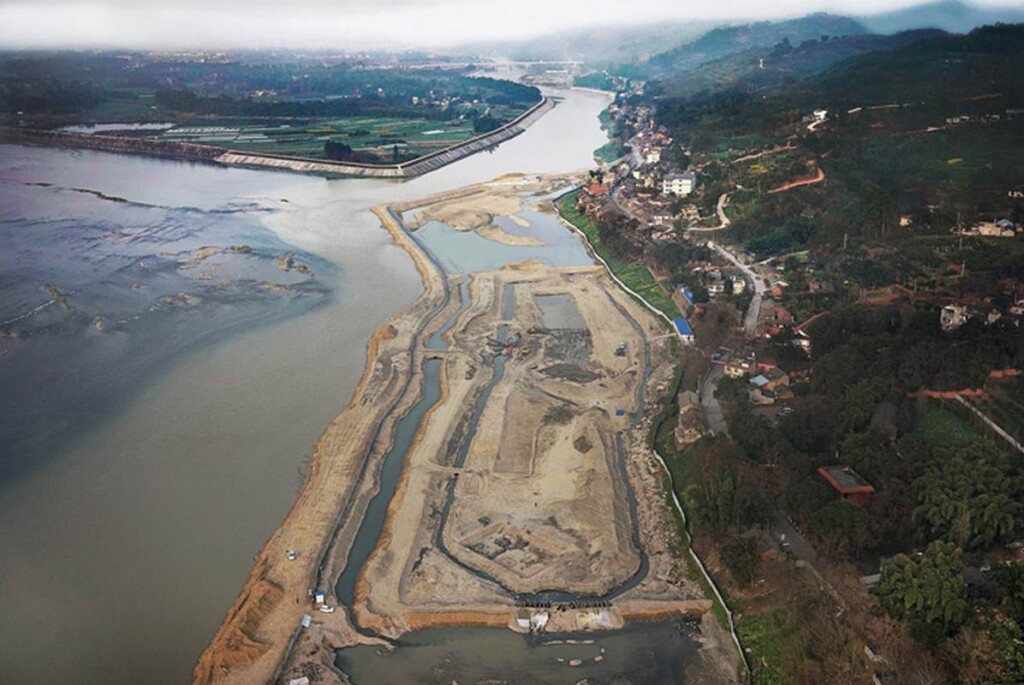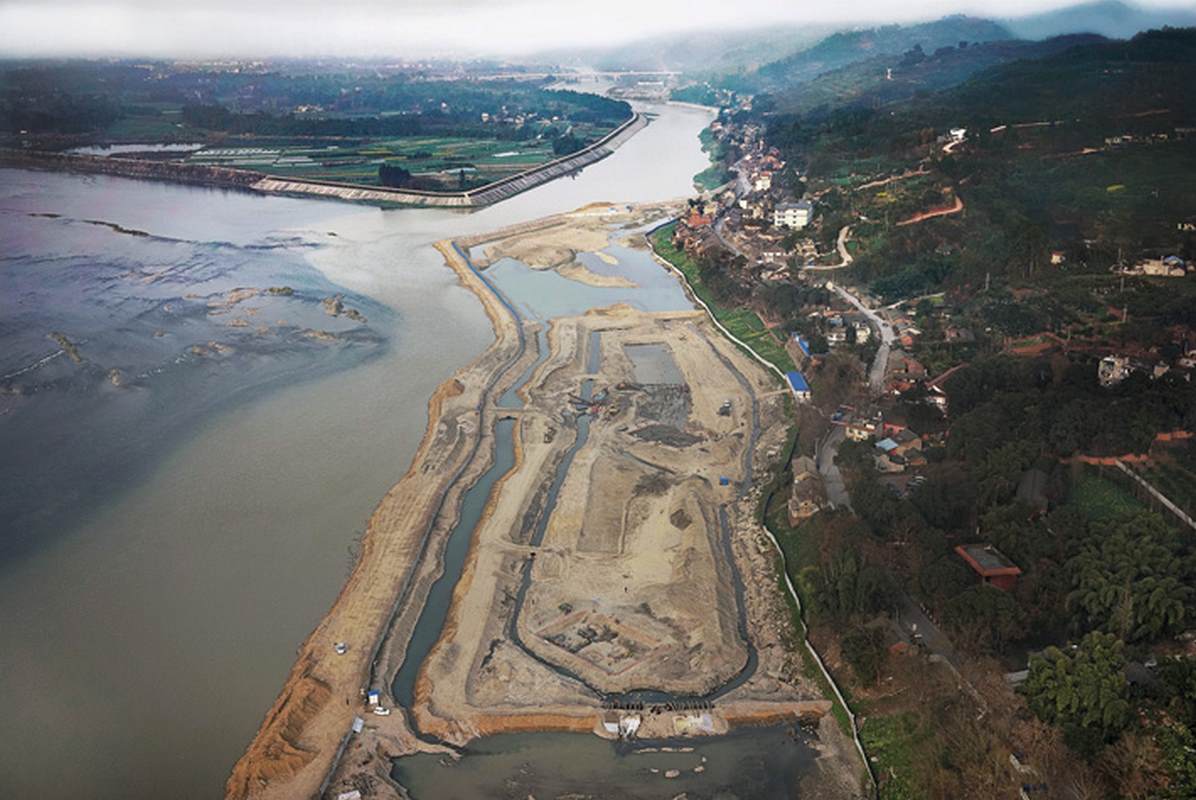
There is a textbook for English readers in Hong Kong universities on 6,000 years of Chinese history. After reading the first part, which documents the political history of the country, a trend is immediately identifiable—that ruling dynasties rose from peasant rebellions and fell to peasant rebellions.
Now, in southern China’s Sichuan Province, a series of archaeological discoveries consisting of over 70,000 artifacts of gold, silver, bronze, military equipment, symbols of high office, and more tell the tale of one such rebellion—a doomed effort to carve out a new dynasty during the conflagration of the old regime.
At the confluence of the Min and Jin rivers, an expedition of ships belonging to the 17th-century peasant warlord Zhang Xianzhong was ambushed while supposedly carrying his entire treasury—the plundered wealth of many small Ming Dynasty fiefdoms—which he needed to safeguard his legitimacy and pay his soldiers.
The treasure is rumored to be worth one hundred million of the standard liang silver coins, which weighed 40 grams—or 8.8 million pounds of silver in simpler terms. Set upon by the supreme commander of the Ming armies, Yang Zhan, the fleet was sent to the murky bottom near the modern town of Jiangkou along with the treasure, thousands of soldiers, and any chance Zhang had of successfully ruling his proclaimed kingdom of Daxi.
Now, a featured story in Archaeology Magazine, a publication of the Archaeological Institute of America, speaks with the Chinese excavators who, like generations of fishermen and royal officials before them, are scouring the depths of the Jin and Min rivers for Zhang’s treasure.
So far, the team from the Sichuan Provincial Institute of Archaeology and Cultural Relics has dammed parts of the Min River where it flows by Jiangkou and surveyed 250 acres of riverbed since 2016.
Underneath the water, bedrock chutes hid many of the artifacts of Zhang’s treasure fleet from divers and treasure hunters, where they have now been recovered by the excavation team by the tens of thousands.

“These finds not only verified historical records about the Jiangkou battle and the sunken treasure, but also shed light on the extensive social turmoil at a time of dynasty change, as well as on Zhang Xianzhong himself as a controversial historical figure,” said Liu Zhiyan of the Sichuan Provincial Institute and team leader of the excavations.
Conquest and plunder
Zhang was an archetypal oriental despot, and though he came from humble origins, he ruled over his mostly agricultural population with a mailed fist, using terror and raiding as his main instruments of statecraft. The artifacts found at the site of his fleet’s demise chart his bloody path of conquest across the flagging years of the Ming Dynasty.
OTHER SHIPWRECK STORIES: Treasure For 3 Miles: A Scatter Trail from the Most Famous Shipwreck is Uncovered Behind the Maravillas
Like all the Chinese dynasties, the Ming rose out of a peasant rebellion to topple to Mongol-led Yuan Dynasty, and they established their rule in Beijing around a series of at-first-effective administrative and economic reforms. But like all the other dynasties to precede them, the Ming administration had flaws that grew into cancerous tumors.
For the Ming, it was a bureaucratic process known as the enfeoffment system, which granted county-sized landholding monopolies or “fiefs” to nobles. These fief lords were given “conferring tablets” to denote their authority to collect taxes. This delegation created a network of little emperors that taxed the peasantry into squalor and famine—the conditions out of which Zhang rose to power like a wild spark from a fire.
He used his aptitude as a soldier and general to rally bandits and farmhands to his cause and went to war on the Ming Dynasty, cutting a swath through the fiefdoms.
MORE CHINESE HISTORY: 4,200-Year-Old Ceramic Storm Drains in Ancient Chinese Town Are the Oldest of Their Kind
Many of the artifacts found in the river near Jiangkou tell the tale of these victories, as they’re almost all plunder from cities and palaces taken during this campaign. The treasures include gold conferring tablets and other symbols of office such as a silver tablet commissioned by the King of Chu to the Ming Emperor for annual taxation, and a 200-year-old gold seal that weighed more than 17 pounds and had been used by 13 generations of rulers from the Shu vassal state.
In 1643, Zhang’s army also occupied the city of Changde, and captured another pair of gold conferring tablets owned by the King of Rong, another vassal to the emperor.
It’s one of those special occasions when historical accounts match with the archaeological evidence.
“The items unearthed from the Jiangkou battleground site match well with Zhang’s route of conquest as recorded in the literature,” Liu told Archaeology Magazine’s Ling Xin.
They also found coins minted in Daxi, the brief kingdom set up by Zhang in Sichuan Province, of which only a single example has been found previously in China.
FROM THE WRITERS AT ARCHAEOLOGY: 300 Epic Ancient Murals ‘Unique in the World’ Depict Creation Myths on Texas Rock: ‘Oldest Books in North America’
Arguably the most important piece of treasure was a royal seal used by Zhang himself, embellished in gold with a tiger to suit his warlord name of “huang lao hu” or “Yellow Tiger.”
After he lost his treasury, Zhang’s path to kingship descended into what some historians call madness, but which was at least heavy-handed tyranny. He sacked several of his own cities in internal disputes and taxation enforcement, and witnessed mass defection in the ranks to the Ming Dynasty as a result.
SHARE This Remarkable Confluence Of Rivers, History, And Archaeology…




















